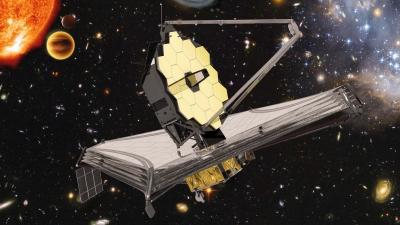
After decades of waiting, the James Webb Space Telescope, the largest and the most powerful observatory ever built was finally launched on December 25. It was conceived as the successor to the Hubble Space Telescope more than 30 years ago, with special instruments such as the giant hexagonal mirror, this observatory is set to explore the early phases of cosmic history, looking back in time to a few hundred million years after the Big Bang. The telescope is the result of an immense international collaboration, and integrates Canadian and European instruments. One of the major goals of the telescope is the discovery of exoplanets. It will also investigate the potential for life on those worlds by studying their atmospheres.
JWST is often considered the successor to the Hubble Space Telescope, which has been orbiting the Earth since 1990. However, JWST’s mirror will dwarf Hubble’s mirror, which is just 8 feet, or 2.4 meters, wide. This next-generation observatory promises to be 10 to 100 times more sensitive than Hubble and much more capable of picking up distant, faint objects. To emphasize JWST’s impressive capabilities, NASA claims that the telescope would be able to pick up the infrared light emitted by a bumblebee located at the distance of the Moon.
Astronomers have dreamt of JWST’s capabilities for the last two and a half decades, but turning those dreams into reality has been a grueling process. Scientists formally proposed a massive infrared space telescope in 1996, and early mission engineers hoped to launch such an observatory as early as 2007 for a price tag as low as $1 billion. However, creating the spacecraft took much more time and money than anyone anticipated. JWST missed one target launch date after the next, while its budget ballooned by billions of dollars. Congress even tried to cancel the project at one point over the rising costs but agreed to continue funding the mission if NASA stuck to a cost cap of $8.8 billion. However, NASA blew through that, and the entire mission cost now sits at $9.7 billion.
Credit : The Verge
Picture Credit : Google
Leave a Reply